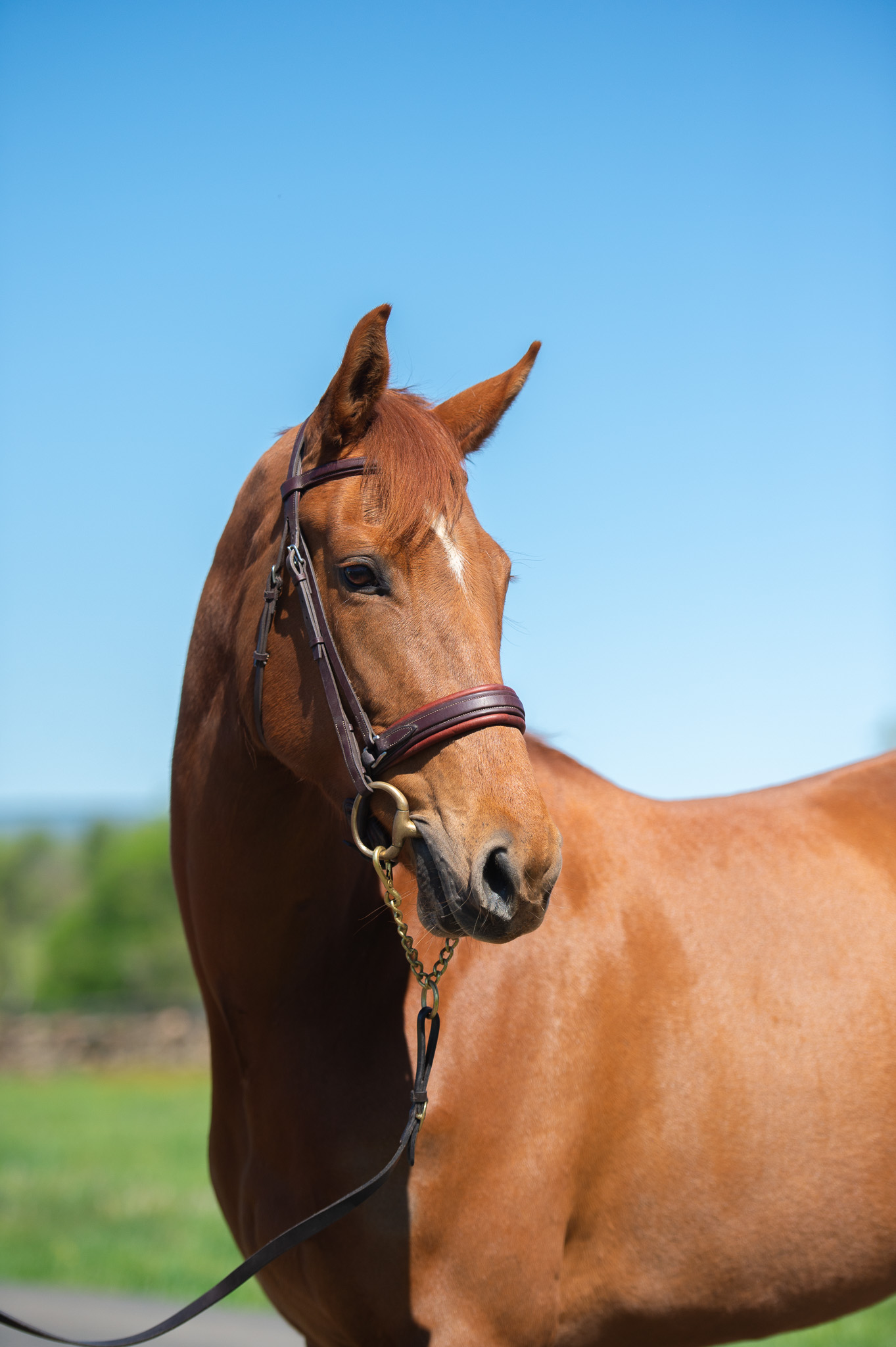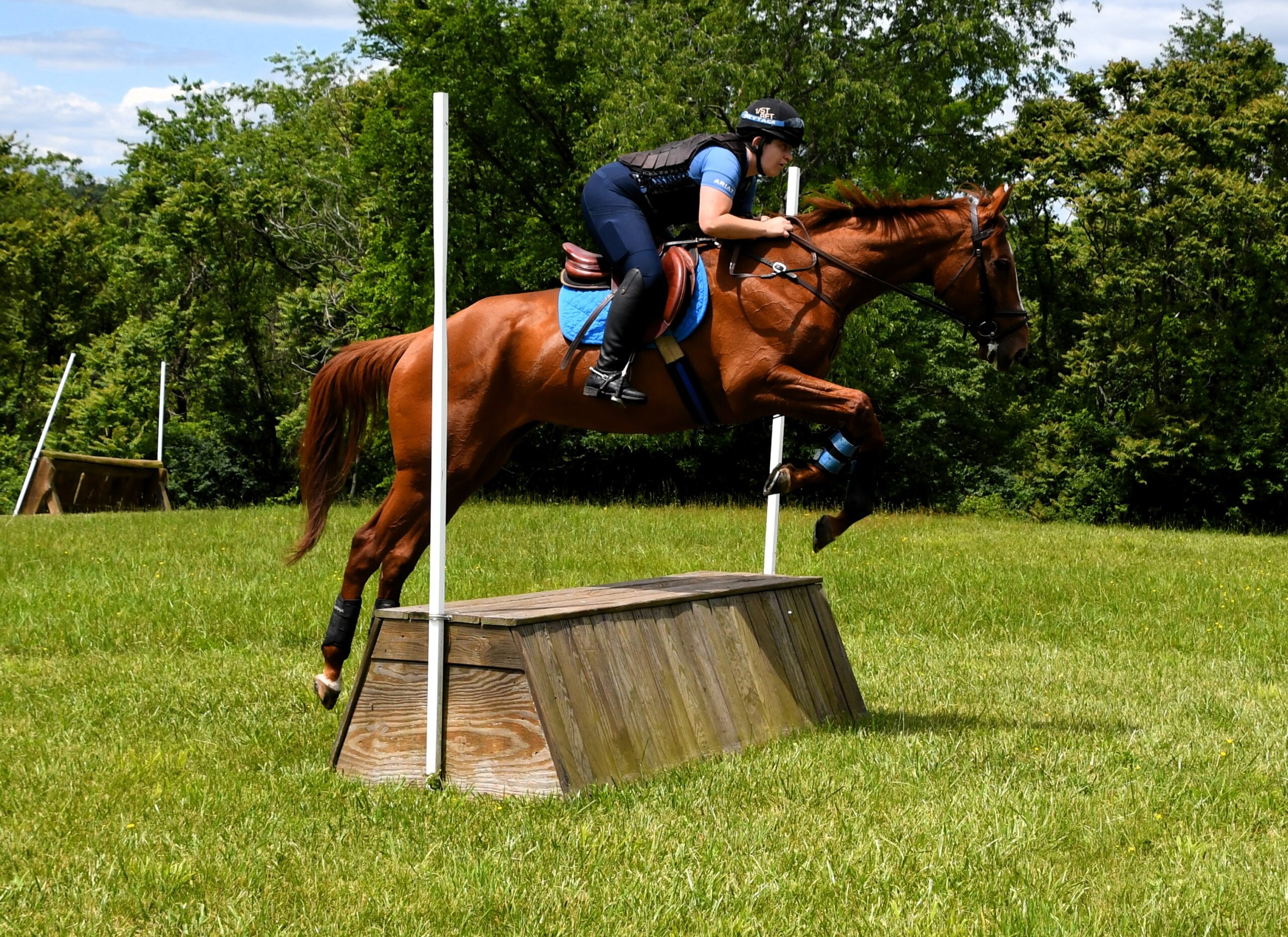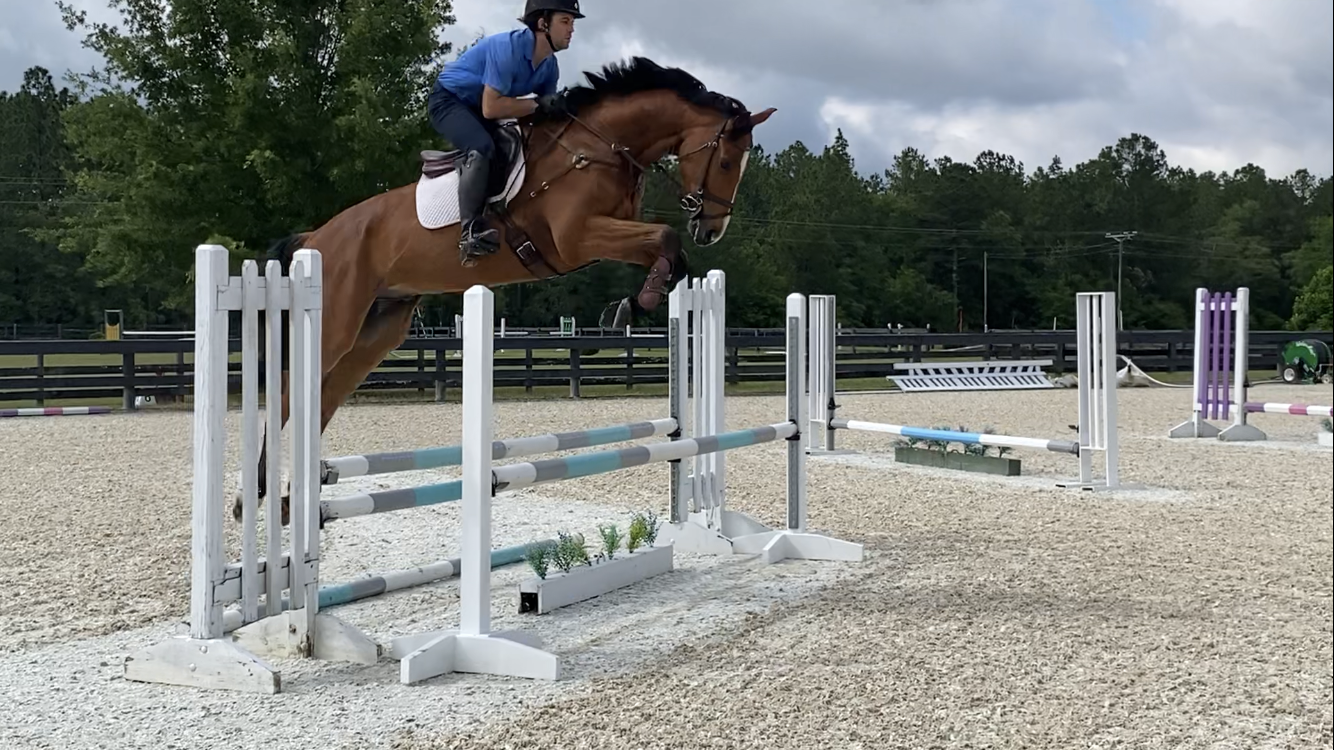Getting a chance to visit somewhere warm and sunny and escaping a bit of the frigid Alberta winter is always a great thing, but having it include horses, eventing, and education makes it even better! Many thanks to Jessica Kerschbaumer for allowing this republication of her blog from earlier this year following the USEA Eventing Coaches Program (ECP) Symposium.

A beautiful morning on day three of the USEA ECP Symposium in Morriston, FL. Photo by Jessica Kerschbaumer.
It was great to see a group of familiar Alberta faces as well as other Canadians at the 2023 United States Eventing Association Eventing Coaches Program (ECP) Symposium which took place in January at beautiful Barnstaple South in Morriston, FL. The Eventing Coaches Program was introduced in 2002, focusing on safety, continuing education, commitment to classical principles, and diversity, equity and inclusion. Coaches can be certified at five different levels depending on their riding and coaching experience, as well as horsemanship and practical knowledge.
In addition to workshops and assessments, another educational opportunity provided by this program is the annual ECP Symposium which is open to the general public as well as coaches. It was held over three days and provided the opportunity for coaches, riders, judges, and others involved in eventing to gather in an educational, collaborative, and interactive setting to explore skills, techniques, learning styles and philosophies related to the sport of eventing. It was great how the symposium focused on education of not just coaches, but riders and parents of riders as well.

Photo by Jessica Kerschbaumer.
A star studded line-up of speakers and ECP faculty members, as well as many notable eventing coaches and riders from across the USA and Canada were in attendance. Each day had a different focus: Dressage on day one, Stadium on day two, and Cross Country on day three.
A staple throughout the three days of the symposium was the new ECP eventing handbook By The Levels, which was introduced in 2022. This incredible resource comprehensively lays out, for Starter through Advanced, the purpose of each level, and rider and instructor expectations for each level. Each level is then broken down further by discipline, and then each discipline into three different categories:
• Position, Balance, Aids
• Rider Skills
• Exercises and Concepts
The handbook outlines a clear and structured progression through the levels which focuses on a strong foundation of basic principles, and mastery of skills before progressing to the next level. It is an extremely useful resource for coaches, riders, and parents. Attendees were encouraged to refer to the handbook throughout the symposium, and while creating the lesson plans, to ensure what was being discussed and laid out was appropriate to the level of each horse and rider.

Day one started out uncharacteristically crisp and frosty in the morning as we arrived and checked in and were assigned to our breakout groups. We were introduced to our host and faculty members, who included Karen O’Connor, Phyllis Dawson, Robin Walker, Mary D’Arcy, Bec Braitling, Jan Byyny, Emily Beshear and more. Guest speaker, dressage legend Peter Gray, started us off by discussing the new USEA dressage tests, many of the movements, as well as the nuances of training and judging dressage.
Then we divided up into our breakout groups for a brainstorming session about managing unrealistic expectations between coaches and riders/parents, which is a common problem in many sports. There was much discussion about different approaches and ideas between the group members, and each group came up with three basic strategies or ways to help coaches, riders, and parents stay on the same page. All this information was taken away by the ECP faculty to review at a later date to help them find more ways to continue to assist coaches, and it was interesting to note that every single group listed the By The Levels handbook as a helpful resource to assist with solving this problem.
By mid-morning the sun had started to thaw out our chills and we headed outside to watch the first riding session, a dressage rider being taught a demo lesson by ECP faculty member Mary D’Arcy.

After lunch we broke into our groups again and moved on to the interactive lesson portion of the day. Each group was assigned a faculty member for guidance, who rotated to a different group for each session, and in each of the sessions which covered riders from Beginner Novice through Advanced, a horse and rider were assigned to each group. The groups had the opportunity to ask questions of their assigned rider, and then observed their warm up, discussing and collaborating with their group and faculty member on what they were seeing, strengths and weaknesses, creating priorities for the pair, and referring to the By The Levels handbook.
The priorities were recorded onto a a flip chart for each group, along with possible exercises to use in the lesson, and then a lesson plan was developed. One group was chosen, and then the faculty member taught the lesson that their group had put together, and feedback, questions and comments were invited from everyone after the lesson. Many different approaches, ideas, and exercises came from the group members as they put their heads together, but the underlying theme of every single lesson was a strong foundation of the basics, focus on the training scale, and an appropriate progression through the lesson for horse and rider. One of the best parts of this interactive format, was that while one faculty member led the lesson, each faculty member assigned to the other groups remained with their group to quietly discuss and answer questions while each lesson took place.

Karen O’Connor discussing the basics of cross country riding. Photo by Jessica Kerschbaumer.
Day two started out with another guest speaker, clinical and sports psychologist, Dr. Paul Haefner, who is also a rider himself. He discussed emotional behavior in riders, and his in depth presentation really helped everyone understand the difference between negative and positive emotional behavior, self regulation, and different skills and strategies that can be used to help improve them.
We then headed outside and the faculty members gave a talk on all the different facets of show jumping, including the five rider responsibilities: direction, speed, balance, rhythm and tempo. We were encouraged to keep these in mind as we formulated the lesson plans for the show jumping sessions that carried on through the afternoon. Again we broke into our groups and faculty leaders rotated through again as we were assigned horse and rider pairs and developed lesson plans on our flip charts. Appropriate exercises were chosen to link proper flatwork to the jumping, and to improve the performance of each horse and rider pair in a structured and progressive way. The importance of the rider responsibilities and proper basics shone through in each lesson taught even at the lowest levels.
We wrapped up the day with the ECP faculty members discussing the program’s application process, workshops, and the assessment process. They also covered the expectations of the program and gave advice on what makes a successful coaching assessment, and then we finished with a Q&A session where attendees were given the opportunity to ask further questions about the program.

Alberta rider Reagan Noyes with Phyllis Dawson. Photo by Jessica Kerschbaumer.
The third and final day started out with a gorgeous sunrise on the cross country course as Phyllis Dawson and Robin Walker led a demo by advanced rider Alex O’Neal, who demonstrated the different types of canters needed during different part of cross country riding, jumping, and schooling, as well as the different rider body positions.
Karen O’Connor then took over to discuss the basics of cross country riding, emphasizing that we must by very clear and systematic about everything. She discussed rider and body positioning for different parts of cross country, as well as different ways to hold the reins, and everything was demonstrated by the demo riders as she spoke. The riders then put these basics to work in some lengthening and shortening exercises, and some small jumps.

Groups gathering on cross country to create lesson plans for their assigned horse and rider. Photo by Jessica Kerschbaumer.
From there Robin Walker and Emily Beshear took over and discussed how to coach horses and riders through negotiating different cross country obstacles such as ditches, banks and water, with a demonstration rider on a green horse.
Again we broke into our groups and created lesson plans for our assigned riders, with the chosen faculty leaders teaching the lesson, keeping in mind the basics of cross country that had been discussed earlier. Different elements of the cross country course, including terrain and mounds, were incorporated into each lesson to help each horse and rider improve different skills. It was exciting to have one of our own Albertans as a demo rider in one lesson, Reagan Noyes and her thoroughbred gelding, Scooby Dude. They got a lesson from Phyllis Dawson that focused mainly on the water complex, progressively adding in more technical elements to build confidence.

Some of the Albertans in attendance. L to R, Kathleen Ziegler, Jessica Kerschbaumer, Catherine David, Gemma Gerlach-Murray and Becky Staden. Photo by Maribeth Murray.
Continuing education is so important, and the symposium is a place where coaches can gather together, learn and collaborate. It provides an opportunity for coaches to ensure that even though everyone has different teaching styles, that the proper foundation and basics are being taught consistently across the board and that everyone is on the same page. Everyone who attended, whether they were a coach, rider or parent, came away more educated, inspired, and with more tools in their tool kit.
For more information on the program visit https://useventing.com/safety-education/eventing-coaches-program.






































